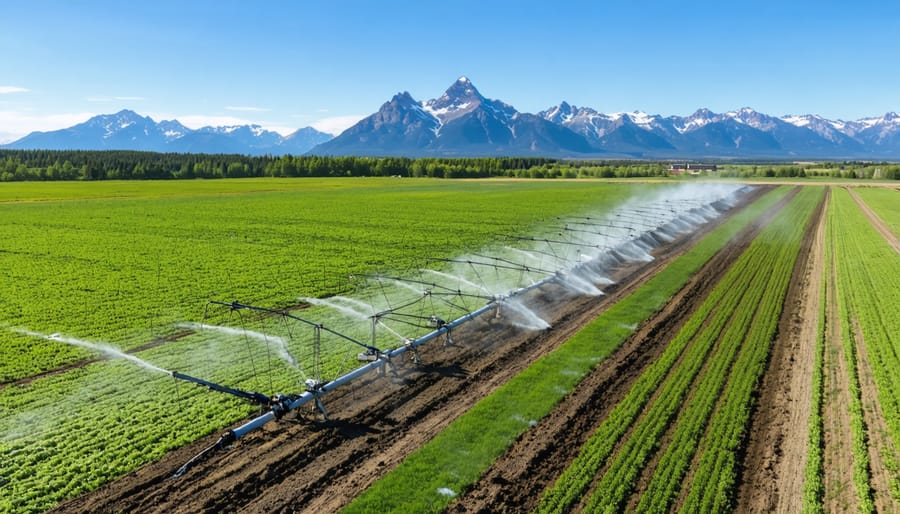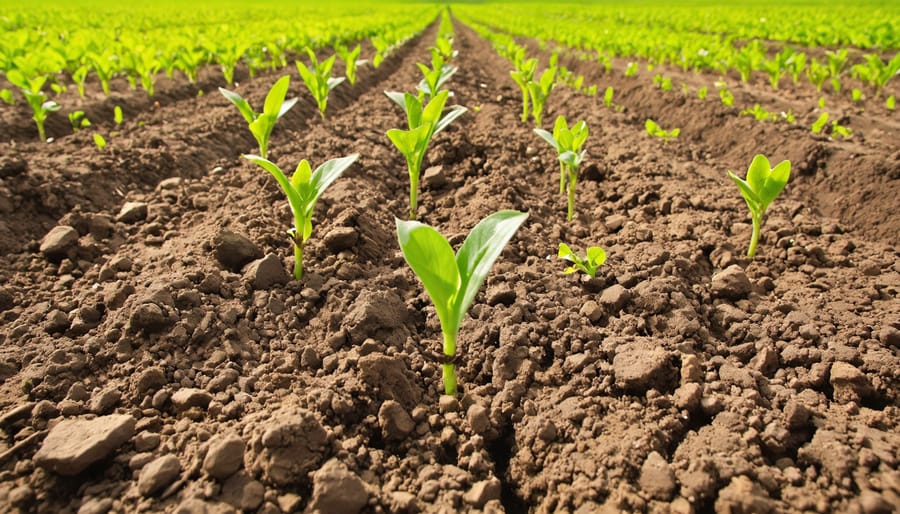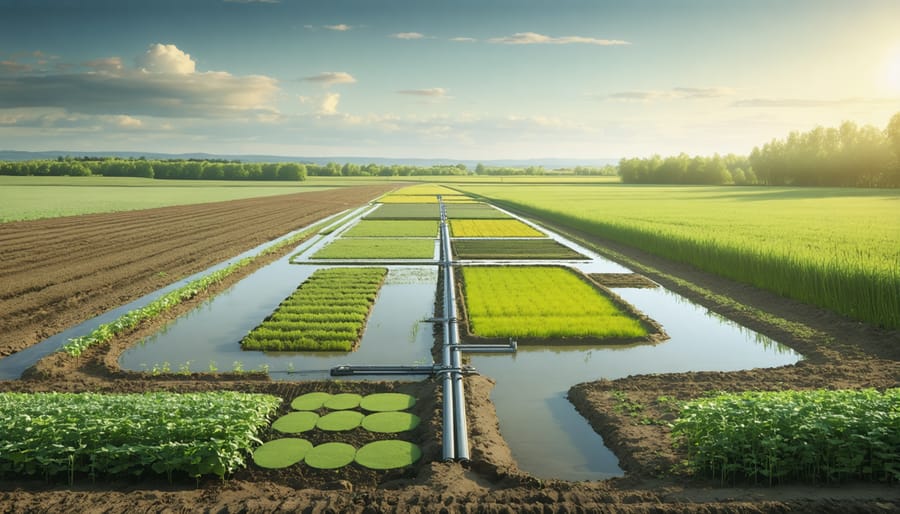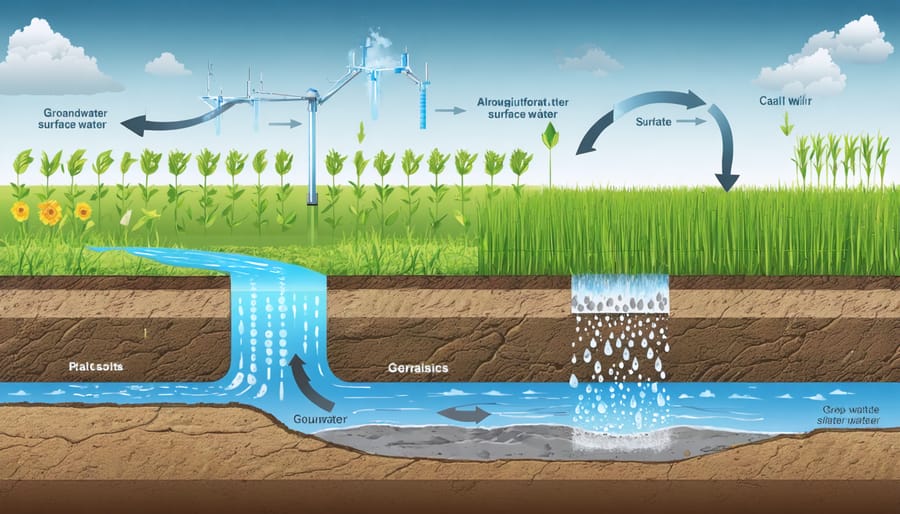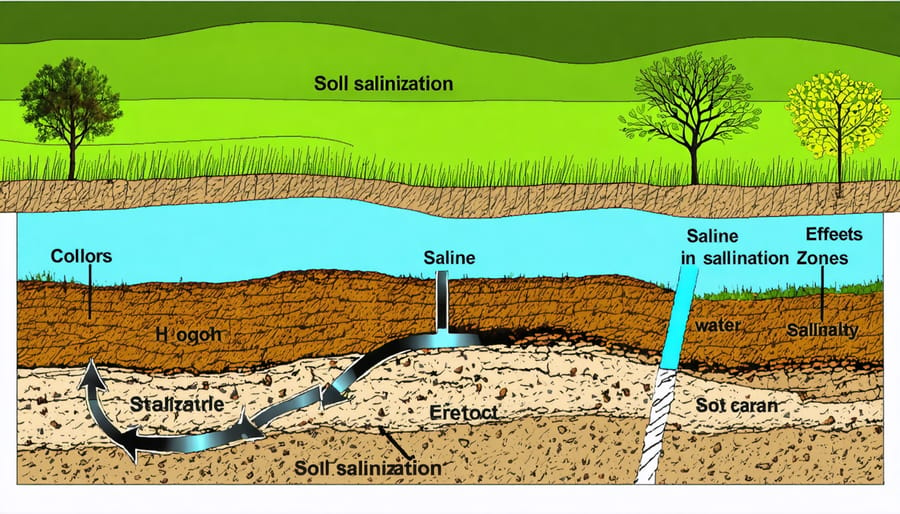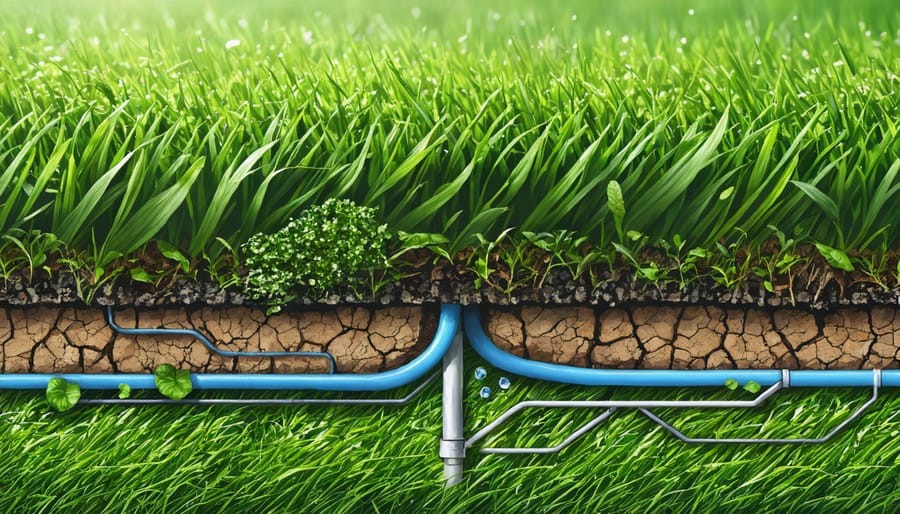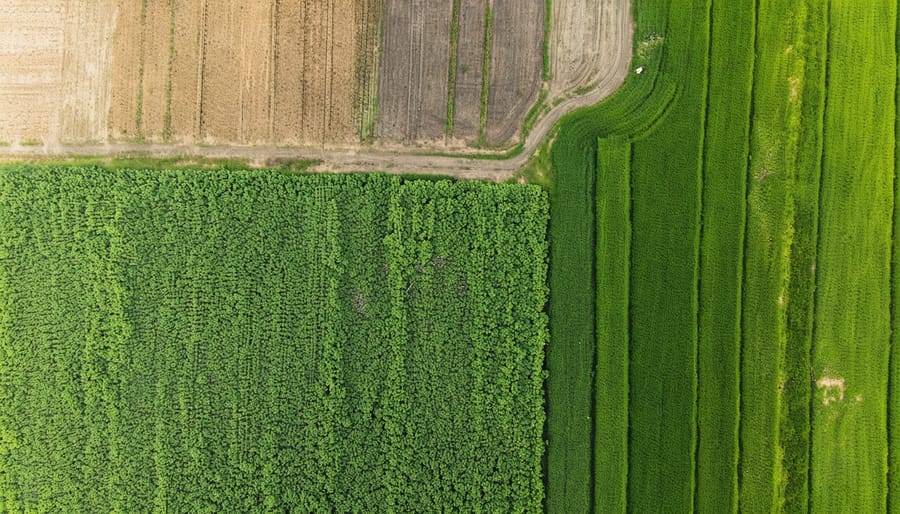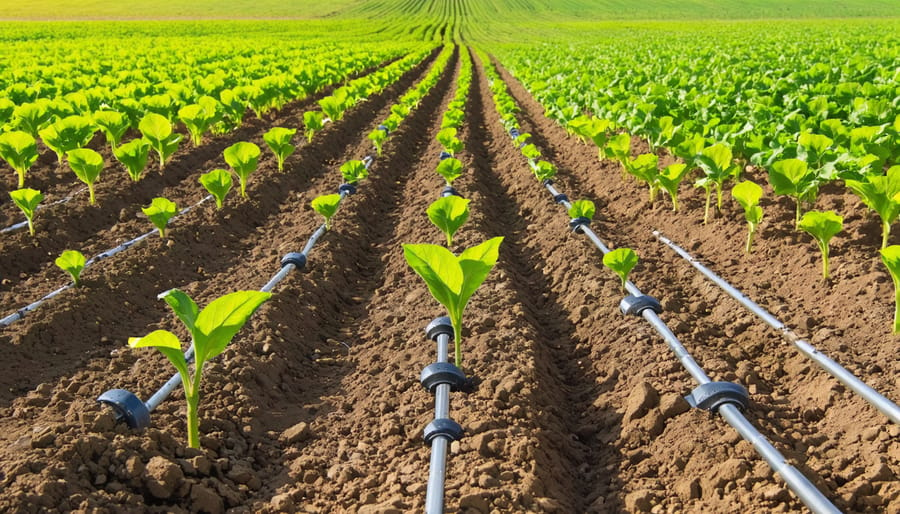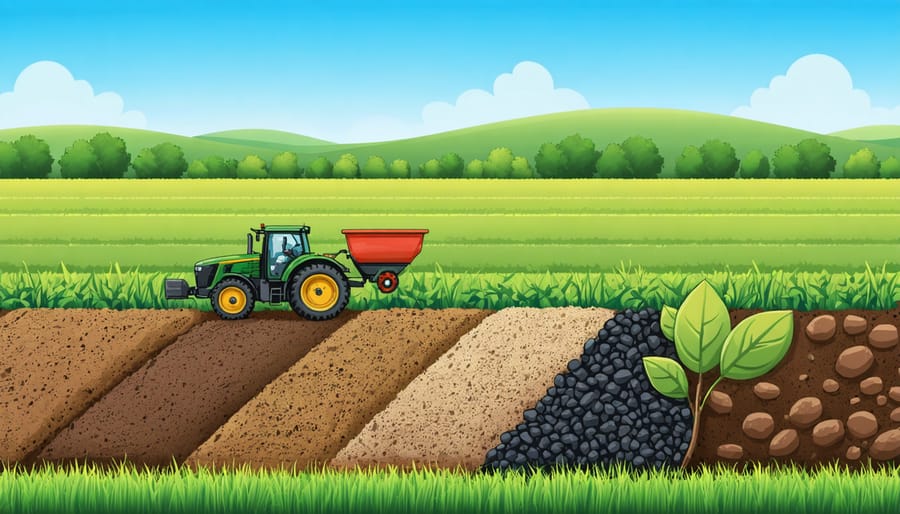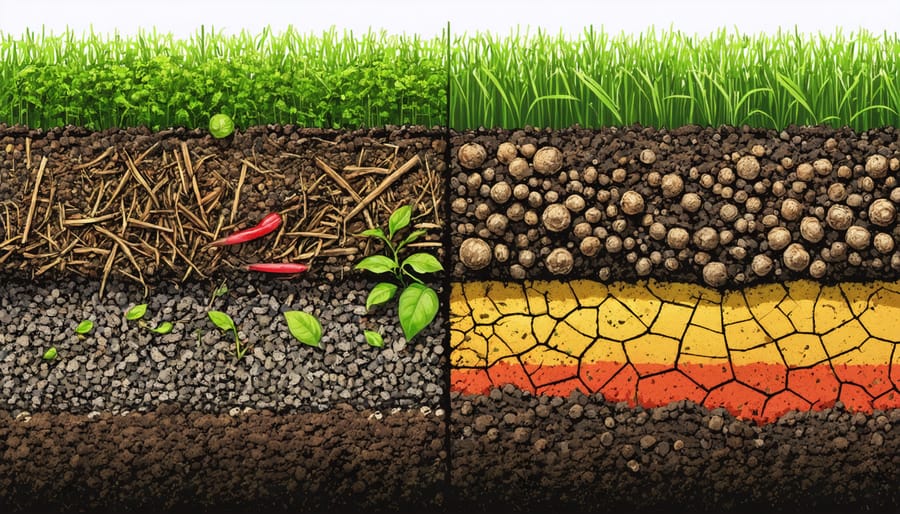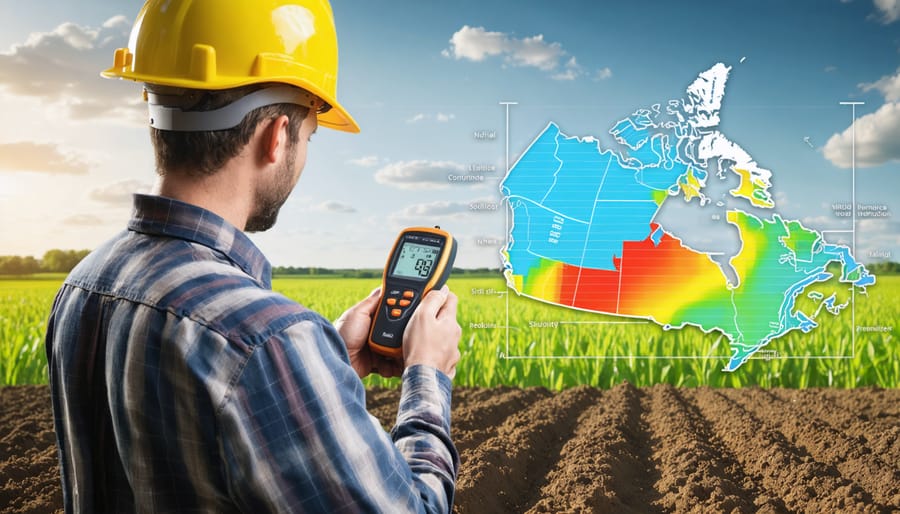Precision irrigation revolutionizes modern farming by delivering exactly the right amount of water, exactly when crops need it. Alberta farmers implementing these systems have achieved remarkable water efficiency gains of up to 30%, while simultaneously boosting crop yields by 20-25%. Real-time soil moisture sensors, weather-integrated controls, and GPS-guided equipment now enable growers to manage water resources with unprecedented accuracy, transforming traditional irrigation practices into data-driven operations that respond to specific field conditions. For Canadian farmers facing increasing weather variability and rising operational costs, precision irrigation represents a proven solution that not only conserves our precious water resources but also delivers measurable returns on investment through reduced input costs and improved crop quality.
The Science Behind Precision Irrigation
Soil Moisture Sensing Technology
Modern soil moisture sensing technology has revolutionized soil moisture management for Canadian farmers. The most common sensors include capacitance probes, which measure water content through electrical charges, and tensiometers that gauge soil water tension. These sensors can be installed at various depths, typically from 30 to 100 centimetres, providing real-time data about moisture levels throughout the root zone.
Wireless soil moisture monitoring systems have become increasingly popular across Alberta’s farming communities, offering convenient smartphone access to field conditions. Many systems include temperature sensors and electrical conductivity measurements, giving farmers a comprehensive view of soil health. Data loggers collect and transmit information to cloud-based platforms, enabling informed irrigation decisions from anywhere.
For smaller operations, portable moisture meters offer a cost-effective solution, while larger farms often benefit from permanent sensor networks. These systems can be integrated with weather stations and irrigation controllers, creating an automated response to changing soil conditions. Local agricultural extension services often provide guidance on sensor placement and calibration to ensure optimal performance in our diverse Canadian soil types.
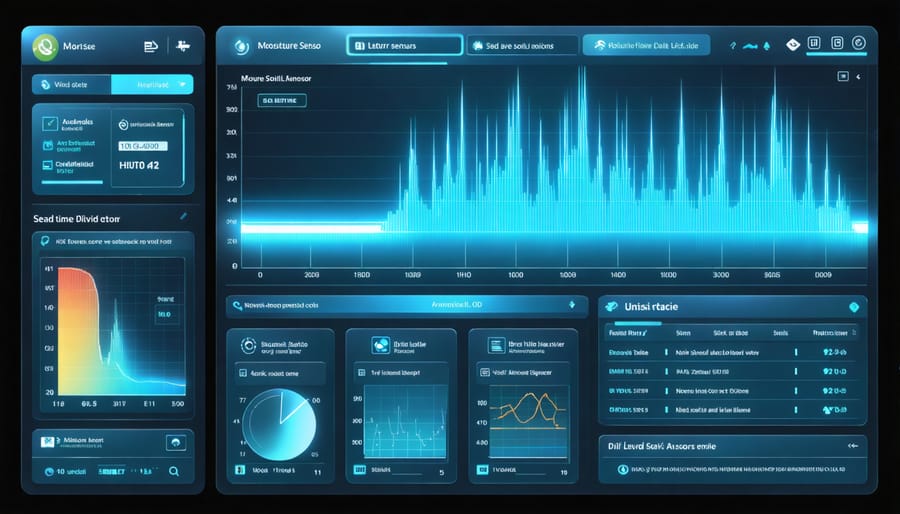
Weather Integration Systems
Modern weather integration systems serve as the brain behind intelligent irrigation decisions, combining real-time local weather data with soil moisture readings to optimize water usage. In Alberta’s diverse climate zones, from Medicine Hat’s semi-arid conditions to Edmonton’s more temperate environment, these systems pull data from local weather stations and Environment Canada to create precise watering schedules.
The systems track essential metrics including precipitation, temperature, wind speed, and evapotranspiration rates. When rain is forecasted, the irrigation system automatically adjusts its schedule, preventing unnecessary watering and conserving resources. This smart integration has helped Prairie farmers reduce water usage by up to 30% while maintaining optimal crop health.
Weather stations installed directly on farms can provide even more localized data. These stations communicate with the irrigation controller through wireless technology, offering minute-by-minute updates that influence irrigation timing and duration. For instance, during hot, windy conditions, the system might schedule irrigation for early morning or evening to minimize water loss through evaporation. This data-driven approach ensures crops receive exactly what they need, when they need it, regardless of changing weather patterns.
Real-World Success Stories
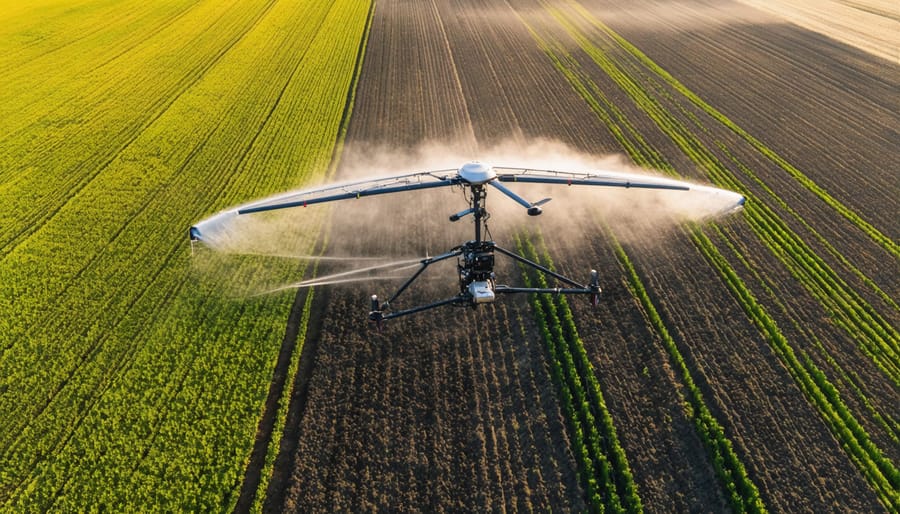
Southern Alberta Potato Farm Revolution
The Schiffner family farm in Lethbridge County stands as a shining example of how innovative irrigation methods can transform traditional farming practices. In 2018, the Schiffners implemented a precision irrigation system across their 400-hectare potato operation, resulting in a remarkable 30% reduction in water usage while maintaining premium crop quality.
By installing soil moisture sensors every 100 metres and implementing variable-rate irrigation technology, the farm now delivers exactly what each section of the field needs. The system’s real-time monitoring capabilities allow the Schiffners to adjust water application based on specific soil conditions, weather patterns, and crop requirements.
The results speak for themselves: annual water savings of approximately 115 million litres, a 15% increase in marketable yield, and significant reductions in energy costs. Perhaps most importantly, the farm has seen a dramatic decrease in potato diseases typically associated with over-irrigation, such as late blight and pink rot.
“The investment paid for itself within three growing seasons,” notes Marie Schiffner, third-generation farmer. “But the real reward is knowing we’re contributing to sustainable water management in our region while producing better potatoes.”
The Schiffners now regularly host field days, sharing their experience with fellow Alberta farmers and demonstrating how precision irrigation can benefit both the environment and the bottom line.
Small-Scale Market Garden Implementation
Small-scale market gardens across Alberta are discovering that precision irrigation isn’t just for large commercial operations. With systems starting from as little as 1 hectare, these operations are seeing impressive results in both water conservation and crop quality.
Take Sarah Mitchell’s 2-hectare vegetable farm near Okotoks, for example. After implementing a drip irrigation system with soil moisture sensors, she reduced her water usage by 40% while increasing her tomato yield by 25% in the first season. “The initial investment paid for itself within two growing seasons,” Sarah notes.
These smaller systems typically combine basic components like drip lines and timers with smart controllers that can be managed through a smartphone. Many market gardeners start with a single zone and expand gradually as their operation grows. This scalable approach makes precision irrigation accessible even with modest budgets.
Local suppliers in Alberta now offer starter kits specifically designed for market gardens, complete with installation support and training. The Prairie Farm Rehabilitation Administration (PFRA) also provides resources and occasional grants for small-scale farmers looking to improve their irrigation efficiency.
For best results, market gardeners should focus on high-value crops initially, such as herbs and vegetables, where precise water management can significantly impact quality and market value. This targeted approach helps maximize the return on investment while building experience with the technology.
Implementation Guide
System Selection and Setup
Selecting the right precision irrigation system starts with a thorough assessment of your farm’s specific needs. Consider your field size, crop types, soil composition, and local climate patterns. Here in Alberta, where weather conditions can be particularly variable, it’s crucial to choose a system that can adapt to rapid changes.
Begin by mapping your field’s characteristics, including topography and soil moisture retention capacity. This information will help determine whether a drip irrigation, centre pivot, or linear move system best suits your operation. For fields under 65 hectares, drip irrigation often proves most efficient, while larger operations typically benefit from centre pivot systems.
Your water source’s quality and availability should heavily influence your decision. Test your water for mineral content and potential contaminants, as these factors affect equipment selection and maintenance requirements. Most Canadian suppliers can provide water quality assessment services and recommend appropriate filtration systems.
When it comes to setup, proper installation is critical for system longevity and performance. Work with certified irrigation specialists familiar with local conditions. They can help position sensors optimally and ensure your system meets Alberta’s agricultural guidelines. Consider starting with a smaller pilot area to test and adjust the system before expanding.
Don’t forget to factor in connectivity requirements. Many modern systems rely on cellular or satellite communications for remote monitoring and control. Verify signal strength across your field and choose equipment compatible with your existing farm management software.
Remember to plan for future expansion. While budget constraints might limit initial implementation, select a system that can be upgraded or expanded as your needs grow. Many farmers find success by implementing precision irrigation in phases, allowing them to spread costs while gaining experience with the technology.
Maintenance and Monitoring
Regular maintenance and monitoring are crucial for getting the most out of your precision irrigation system. Here in Alberta, where weather conditions can be unpredictable, keeping your system in top shape is especially important.
Start with weekly visual inspections of your irrigation equipment, particularly checking for clogged emitters, leaks, or damaged components. During peak growing season, increase these checks to twice weekly. Clean filters monthly and flush irrigation lines at least twice per season to prevent mineral buildup and clogging.
Keep detailed records of system performance, including water usage, pressure readings, and soil moisture levels. Many Alberta farmers find that digital logging systems help streamline this process. Modern soil moisture sensors should be calibrated annually, ideally before the growing season begins.
Regular water quality testing is essential, as mineral content can vary throughout the season. This helps adjust filtration needs and prevent equipment damage. Consider collecting samples quarterly, with additional tests after significant rainfall events.
Don’t forget to winterize your system properly. Our harsh Canadian winters can cause severe damage to irrigation equipment if left unprepared. Drain all lines and protect sensors before the first freeze.
Monitor your crop response regularly and adjust irrigation schedules based on real-time data. Many successful farmers in our region conduct weekly crop assessments, looking for signs of water stress or overwatering. This hands-on approach, combined with data from your system’s sensors, helps fine-tune your irrigation strategy.
Remember to keep software and firmware up to date if you’re using automated systems. These updates often include important improvements for system efficiency and security.
Cost-Benefit Analysis
Initial Investment Breakdown
Implementing precision irrigation systems requires careful financial planning, but Canadian farmers can access various cost-effective irrigation solutions and support programs. The initial investment typically ranges from $800 to $1,500 per hectare, depending on system complexity and field size.
Key equipment costs include:
– Soil moisture sensors: $200-400 each
– Weather stations: $2,000-3,500
– Control systems: $1,500-4,000
– Installation and setup: $1,000-2,500
Canadian farmers can significantly reduce these costs through federal and provincial grants. The Canadian Agricultural Partnership (CAP) offers up to 50% cost-sharing for approved irrigation projects. In Alberta, the Irrigation Efficiency Program provides additional funding of up to $15,000 per project.
The Agricultural Clean Technology Program offers grants covering 50-75% of costs for water-efficient technologies. Local conservation authorities may provide supplementary funding. Contact your regional agricultural office to explore available programs and application deadlines. Most farmers recover their investment within 2-3 growing seasons through reduced water usage and improved crop yields.
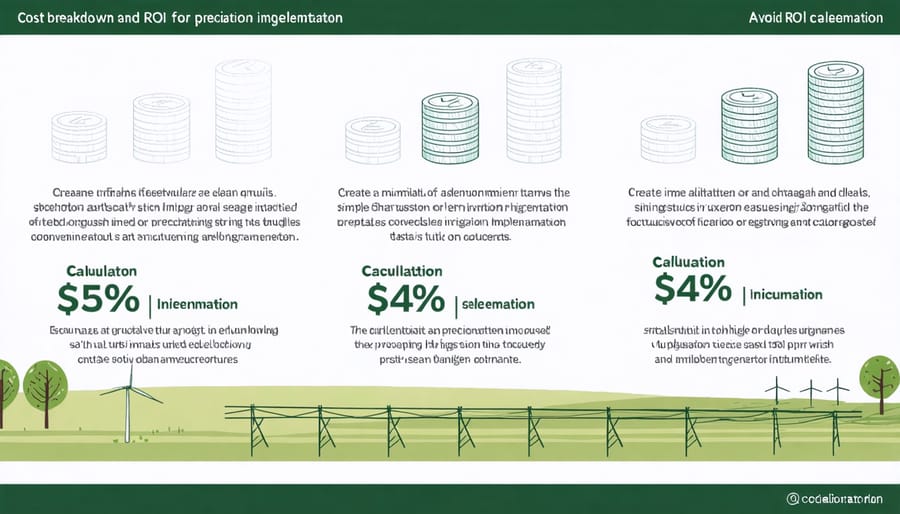
Long-term Benefits
The long-term benefits of precision irrigation systems extend far beyond immediate water conservation. Alberta farmers implementing these systems typically report water savings of 20-30% compared to traditional irrigation methods, translating to significant cost reductions over time. A five-year study conducted by Agriculture and Agri-Food Canada showed that farms using precision irrigation increased their water use efficiency by up to 40%.
Crop yields consistently improve with precision irrigation, with local farmers reporting 15-25% increases in production. These systems allow for optimal moisture levels throughout the growing season, reducing plant stress and promoting healthy root development. For example, potato farmers in southern Alberta have seen improved tuber quality and more uniform crop development, leading to better market prices.
Environmental benefits are equally impressive. Reduced water usage helps preserve local watersheds, while precise application minimizes nutrient leaching and soil erosion. This technology also supports sustainable farming practices by decreasing energy consumption through optimized pump operation. Many farmers report reduced disease pressure in their crops due to better moisture management, resulting in decreased pesticide use.
Most importantly, these systems help build resilience against climate variability, ensuring consistent production even during challenging growing seasons.
As we’ve explored throughout this article, precision irrigation systems represent a transformative approach to water management that’s particularly relevant for Canadian agriculture. The benefits are clear: water savings of up to 30%, improved crop yields, reduced input costs, and enhanced soil health. For Alberta farmers facing increasingly unpredictable weather patterns, these systems offer a practical solution for maintaining productivity while conserving our precious water resources.
The success stories from farms across the Prairie provinces demonstrate that precision irrigation isn’t just about technology – it’s about smarter farming practices that benefit both our agricultural community and the environment. From small-scale vegetable operations to large grain farms, producers are reporting significant returns on their investments, often within just a few growing seasons.
While the initial investment may seem substantial, various federal and provincial support programs are available to help farmers make the transition. The long-term advantages – including reduced labour costs, lower energy consumption, and improved crop quality – make precision irrigation a sound business decision for forward-thinking agricultural operations.
As our farming community continues to evolve, embracing precision irrigation technology represents more than just an upgrade to our irrigation practices – it’s an investment in the future of Canadian agriculture. By working together, sharing experiences, and supporting one another in adopting these innovative systems, we can ensure the sustainability and prosperity of our agricultural sector for generations to come.

